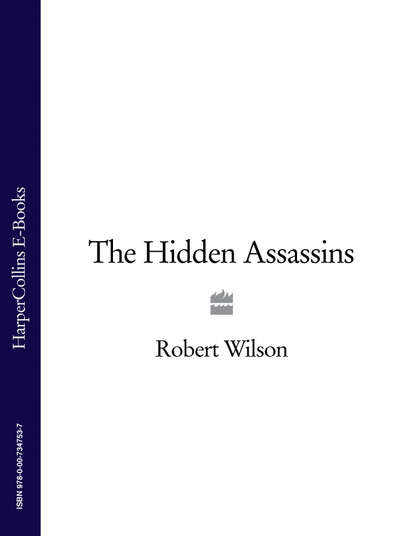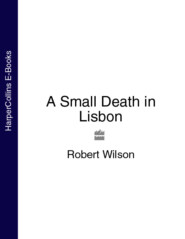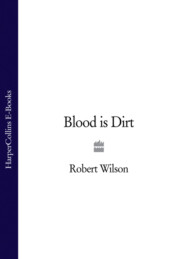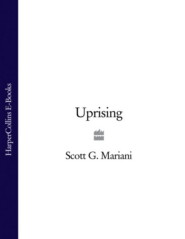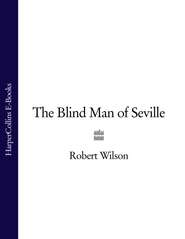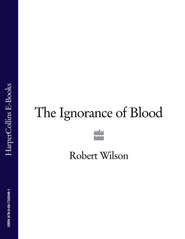По всем вопросам обращайтесь на: info@litportal.ru
(©) 2003-2024.
✖
The Hidden Assassins
Автор
Год написания книги
2018
Настройки чтения
Размер шрифта
Высота строк
Поля
36 (#litres_trial_promo)
37 (#litres_trial_promo)
38 (#litres_trial_promo)
39 (#litres_trial_promo)
40 (#litres_trial_promo)
41 (#litres_trial_promo)
42 (#litres_trial_promo)
43 (#litres_trial_promo)
Coda (#litres_trial_promo)
Acknowledgements (#litres_trial_promo)
About the Author (#litres_trial_promo)
Praise for The Hidden Assassins: (#litres_trial_promo)
Also by Robert Wilson (#litres_trial_promo)
Copyright (#litres_trial_promo)
About the Publisher (#litres_trial_promo)
1 (#ulink_d711a891-52ef-530d-a6d4-071a9f0a90c3)
Seville—Monday, 5th June 2006, 16.00 hrs
Dead bodies are never pretty. Even the most talented undertaker with a genius for maquillage cannot bring the animation of life back to a corpse. But some dead bodies are uglier than others. They have been taken over by another life form. Bacteria have turned their juices and excretions into noxious gas, which slithers along the body’s cavities and under the skin, until it’s drum tight over the corruption within. The stench is so powerful it enters the central nervous system of the living and their revulsion reaches beyond the perimeter of their being. They become edgy. It’s best not to stand too close to people around a ‘bloater’.
Normally Inspector Jefe Javier Falcón had a mantra, which he played in the back of his mind when confronted by this sort of corpse. He could stomach all manner of violence done to bodies—gunshot craters, knife gashes, bludgeon dents, strangulation bruises, poisoned pallor—but this transformation by corruption, the bloat and stink, had recently begun to disturb him. He thought it might just be the psychology of decadence, the mind troubled by the slide to the only possible end of age; except that this wasn’t the ordinary decay of death. It was to do with the corruption of the body—the heat’s rapid transformation of a slim girl into a stout middle-aged matron or, as in the case of this body that they were excavating from the rubbish of the landfill site beyond the outskirts of the city, the metamorphosis of an ordinary man to the taut girth of a sumo wrestler.
The body had stiffened with rigor mortis and had come to rest in the most degrading position. Worse than a defeated sumo wrestler tipped from the ring to land head first in the front row of the baying crowd, his modesty protected by the thick strap of his mawashi, this man was naked. Had he been clothed he might have been kneeling as a Muslim supplicant (his head even pointed east), but he wasn’t. And so he looked like someone preparing himself for bestial violation, his face pressed into the bed of decay underneath him, as if unable to bear the shame of this ultimate defilement.
As he took in the scene Falcón realized that he wasn’t playing his usual mantra and that his mind was occupied by what had happened to him as he’d taken the call alerting him to the discovery of the body. To escape the noise in the café where he’d been drinking his café solo, he’d backed out through the door and collided with a woman. They’d said ‘Perdón’, exchanged a startled look and then been transfixed. The woman was Consuelo Jiménez. In the four years since their affair Falcón had only had a glimpse of her four or five times in crowded streets or shops and now he’d bumped into her. They said nothing. She didn’t go into the café after all, but disappeared quickly back into the stream of shoppers. She had, however, left her imprint on him and the closed shrine in his mind devoted to her had been reopened.
Earlier the Médico Forense had stepped carefully through the rubbish to confirm that the man was dead. Now the forensics were concluding their work, bagging anything of interest and removing it from the scene. The Médico Forense, still masked up and dressed in a white boiler suit, paid his second visit to the victim. His eyes searched and narrowed at what they found. He made notes and walked over to where Falcón was standing with the duty judge, Juez Juan Romero.
‘I can’t see any obvious cause of death,’ he said. ‘He didn’t die from having his hands cut off. That was done afterwards. His wrists have been very tightly tourniqueted. There are no contusions around the neck and no bullet holes or knife wounds. He’s been scalped and I can’t see any catastrophic damage to the skull. He might have been poisoned, but I can’t tell from his face, which has been burnt off with acid. Time of death looks to be around forty-eight hours ago.’
Juez Romero’s dark brown eyes blinked over his face mask at each devastating revelation. He hadn’t handled a murder investigation for more than two years and he wasn’t used to this level of brutality in the few murders that had come his way.
‘They didn’t want him recognized, did they?’ said Falcón. ‘Any distinguishing marks on the rest of the body?’
‘Let me get him back to the lab and cleaned up. He’s covered in filth.’
‘What about other body damage?’ asked Falcón. ‘He must have arrived in the back of a refuse truck to end up here. There should be some marks.’
‘Not that I can see. There might be abrasions under the filth and I’ll pick up any fractures and ruptured organs back at the Forensic Institute once I’ve opened him up.’
Falcón nodded. Juez Romero signed off the levantamiento del cadáver and the paramedics moved in and thought about how they were going to manipulate a stiffened corpse in this position into a body bag and on to the stretcher. Farce crept into the tragedy of the scene. They wanted to cause as little disturbance as possible to the body’s noxious gases. In the end they opened up the body bag on the stretcher and lifted him, still prostrate, and placed him on top. They tucked his wrist stumps and feet into the bag and zipped it up over his raised buttocks. They carried the tented structure to the ambulance, watched by a gang of municipal workers, who’d gathered to see the last moments of the drama. They all laughed and turned away as one of their number said something about ‘taking it up the arse for eternity’.
Tragedy, farce and now vulgarity, thought Falcón.
The forensics completed their search of the area immediately around the body and brought their bagged exhibits over to Falcón.
‘We’ve got some addresses on envelopes found close to the body,’ said Felipe. ‘Three have got the same street names. It should help you to find where he was dumped. We reckon that’s how he ended up in that body position, from lying foetally in the bottom of a bin.’
‘We’re also pretty sure he was wrapped in this—’ said Jorge, holding up a large plastic bag stuffed with a grimy white sheet. ‘There’s traces of blood from his severed hands. We’ll match it up later…’
‘He was naked when I first saw him,’ said Falcón.
‘There was some loose stitching which we assume got ripped open in the refuse truck,’ said Jorge. ‘The sheet was snagged on one of the stumps of his wrists.’
‘The Médico Forense said the wrists were well tourniqueted and the hands removed after death.’
‘They were neatly severed, too,’ said Jorge. ‘No hack job—surgical precision.’
‘Any decent butcher could have done it,’ said Felipe. ‘But the face burnt off with acid and scalped…What do you make of that, Inspector Jefe?’
‘There must have been something special about him, to go to that trouble,’ said Falcón. ‘What’s in the bin liner?’
‘Some gardening detritus,’ said Jorge. ‘We think it had been dumped in the bin to cover the body.’
‘We’re going to do a wider search of the area now,’ said Felipe. ‘Pérez spoke to the guy operating the digger, who found the body, and there was some talk of a black plastic sheet. They might have done their post-mortem surgery on it, sewed him up in the shroud, wrapped him in the plastic and then dumped him.’
‘And you know how much we love black plastic for prints,’ said Jorge.
Falcón noted the addresses on the envelopes and they split up. He went back to his car, stripping off his face mask. His olfactory organ hadn’t tired sufficiently for the stink of urban waste not to lodge itself in his throat. The insistent grinding of the diggers drowned out the cawing of the scavenging birds, wheeling darkly against the white sky. This was a sad place even for an insentient corpse to end up.
Sub-Inspector Emilio Pérez was sitting on the back of a patrol car chatting to another member of the homicide squad, the ex-nun Cristina Ferrera. Pérez, who was well built with the dark good looks of a 1930s matinée idol, seemed to be of a different species to the small, blonde and rather plain young woman who’d joined the homicide squad from Cádiz four years ago. But, whereas Pérez had a tendency to be bovine in both demeanour and mentality, Ferrera was quick, intuitive and unrelenting. Falcón gave them the addresses from the envelopes, listing the questions he wanted asked, and Ferrera repeated them back before he could finish.
‘They sewed him into a shroud,’ he said to Cristina Ferrera as she went for the car. ‘They carefully removed his hands, burnt his face off, scalped him, but sewed him into a shroud.’
‘I suppose they think they’ve shown him some sort of respect,’ said Ferrera. ‘Like they do at sea, or for burial in mass graves after a disaster.’
‘Respect,’ said Falcón. ‘Right after they’ve shown him the ultimate disrespect by taking his life and his identity. There’s something ritualistic and ruthless about this, don’t you think?’
‘Perhaps they were religious,’ said Ferrera, raising an ironic eyebrow. ‘You know, a lot of terrible things have been done in God’s name, Inspector Jefe.’
Falcón drove back into the centre of Seville in strange yellowing light as a huge storm cloud, which had been gathering over the Sierra de Aracena, began to encroach on the city from the northwest. The radio told him that there would be an evening of heavy rain. It was probably going to be the last rain before the long hot summer.
At first he thought that it might be the physical and mental jolt he’d had from colliding with Consuelo that morning which was making him feel anxious. Or was it the change in the atmospheric pressure, or some residual edginess left from seeing the bloated corpse on the dump? As he sat at the traffic lights he realized that it ran deeper than all that. His instinct was telling him that this was the end of an old order and the ominous start of something new. The unidentifiable corpse was like a neurosis; an ugly protrusion prodding the consciousness of the city from a greater horror underneath. It was the sense of that greater horror, with its potential to turn minds, move spirits and change lives that he was finding so disturbing.





